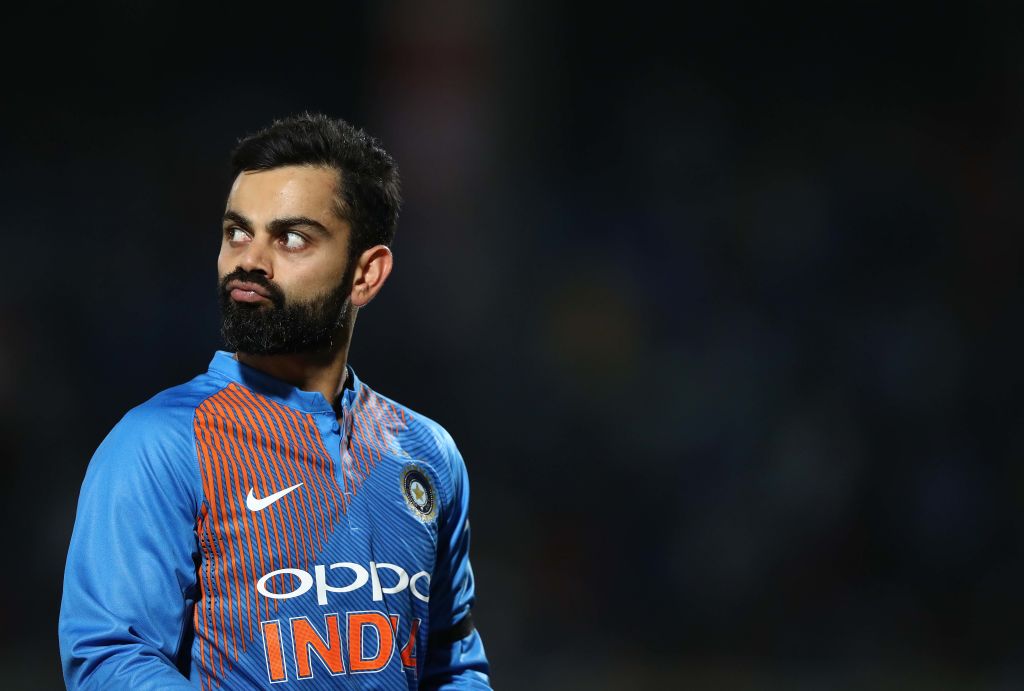Enjoy the two Virat Kohlis – one an oasis of calm, one buzzing

It should surprise no-one that Virat Kohli has fulfilled that rare double of being one of Wisden’s Five Cricketers of the Year as well as its leading cricketer in the world, winning that last accolade for the third year in succession.
India’s captain, compulsive viewing even when knocking-up in
the nets, has shown how it is possible to straddle all three formats of the
game and still excel in each. When more and more cricketers are specialising
between red ball and white, Kohli has shown there is no colour bar for the very
best.
More pleasingly, he has done so without resort to fad or
fancy. Not for him the need to reverse-sweep, switch-hit or ramp over
the shoulder to beat the field and score his runs. Instead, he relies on
balance, supreme judgment of line and length and slight adjustments of the bat
face to find the gaps – of which, when he plays, there are plenty judging from
the 2,735 runs he made for India across all formats last year.
For those championing convention in a world obsessed by progress, Kohli, now 30, is the poster boy par excellence. He doesn’t
follow modern cricketers with their clunky jewellery and funky patterns razored
into their hair. Although wilder of temperament in his youth, the remnants of
which still linger with the odd tattoo, his bearing has always been reasonably
clean-cut and traditional – like a Bollywood Clarke Gable.
Although not breaking new ground as a figure of adoration among India’s legions of
cricket fans (Sachin Tendulkar and MS Dhoni have already blazed that particular
trail), the weight of expectation for him to succeed weighs heavier than on his
contemporaries around the world.
To cope, there appears to be two Virat Kohlis.
The first is Kohli the captain of India, challenging enough
given he fulfils the role in all three formats of the game. This man is a
fizzing bundle of energy and emotions during an opponent’s innings, exhorting
his players, playing to the crowd and demonstratively getting involved with
some aspect of the game almost every ball. This Kohli, one who appears forever
slighted, must come off the field at the close of play utterly spent.
Then there is Kohli the batsman – a man for whom failure is
almost not an option. This person is an oasis of calm with added buffer zones to prevent all the chaff and
white noise of the modern game from entering that most private of
spaces, the one inside his head.
What eventuates from that inner serenity, usually another
brilliant innings, is very public and often just adds to the adulation and
agitation. But that is the pact the greatest sportsmen and women, especially if
they are cricketers in India, sign up to.
When Tendulkar was at his peak, I felt the furthest place he could distance himself from his
devoted public, at least in India, was when batting in the middle. He liked it
there as the challenge of facing the various bowlers would distract him from
the sheer weight of the public’s hero worship. The motivation to spend as long
as possible at the crease, and therefore maintain that distance, was obvious.
I wonder if Kohli is the same and that is what drives his
distaste of risky strokes – ie, the less risk he takes the longer he can spend
batting in his calm little world? If so, it would make sense.
In contrast to his contemporaries around the world, Kohli has prioritised improving his technique in order to become more difficult to dismiss. The malaise of most Indian batsmen, of being indomitable at home but flaky abroad, does not apply. Although dominant on home soil, where he averages 64.68 in Tests, Kohli has improved his showings overseas.
In the first half of his career, his Test average away from
home was 43. Since then it has risen to 52, a rise of almost 10 runs in just
four years.
His 593 runs against England last summer, a team against
whom he’d had little success on previous tours, was a triumph of application,
determination and playing the ball late. On pitches that offered plenty to the
seam bowlers of both sides, he made 244 more runs than the next best batsman on
either side. That converts to him being 41 per cent better than his nearest rival, a towering figure when comparing the game’s elites.
Despite that, India lost the series to England, a major
source of angst for Kohli and one that will have been only partially rectified
by India’s first Test series win in Australia. That victory meant India
retained their status as No.1 Test team in the world, an accolade Kohli has pushed,
pulled and persuaded them into achieving albeit with the help of
some fine pace bowlers.
His next goal will be to emulate Kapil Dev and hoist the
World Cup at Lord’s. As the world’s best 50-over batsman, especially when
judging run-chases, Kohli knows that is well within his and India’s grasp. He
will also know that, going back to 1975, India have lost 31 of the 60 one-day
internationals they have played in England, a ratio that will have to be
improved upon if they are to be in the mix.
Ironically, one of the potential impediments to India
reaching the final is Kohli’s captaincy, which verges on the impatient.
The last time India played ODIs in England 12 months ago,
they lost a three-match series 2-1. Perhaps judging every other player by his
own high standards, Kohli chopped and changed personnel to the point where he
quickly ran out of options.
Morale is a key aspect of team performance and it rarely develops out of constant change – something Kohli, the finest batsman of the age, will no doubt have taken on board as he readies India in their bid to win a third World Cup.